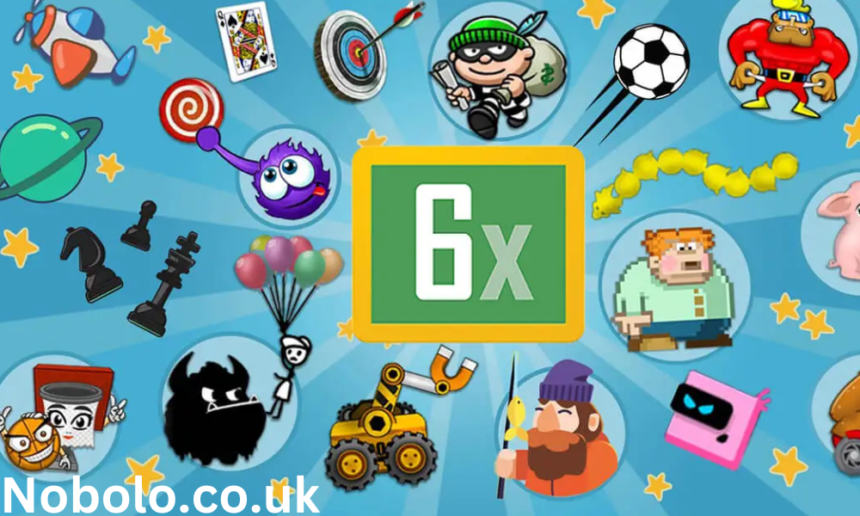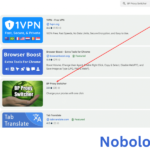In the ever-evolving landscape of education, teachers and students alike are constantly seeking ways to strike a balance between learning and entertainment. One interesting trend that has emerged in classrooms is the use of “unblocked games.” These games offer a unique opportunity for students to engage in activities that are both fun and educational, without compromising the integrity of the classroom environment. In this article, we will delve into the concept of unblocked games classroom, exploring their benefits, types, and how they are used to enhance both learning and leisure.
What Are Unblocked Games?
Unblocked games are online games that can bypass the restrictions typically placed by school networks or administrators. These restrictions are often enforced to prevent distractions, block inappropriate content, and ensure that students remain focused on their academic tasks. However, unblocked games are designed to be accessible even in environments where certain websites are otherwise restricted.
These games are generally lightweight and easy to play, requiring little-to-no installation. They often come in the form of HTML5 or Flash-based games, ensuring they run smoothly on most school computers or devices. More importantly, unblocked games tend to be harmless, age-appropriate, and even educational, making them a viable option for classroom engagement.
Why Are Unblocked Games Popular in Classrooms?
The growing popularity of unblocked games in classrooms can be attributed to several key factors:
- Safe and Accessible Fun: Unlike many other online games, unblocked games are often free of malware, ads, and inappropriate content. This makes them a safe choice for students.
- Stress Relief and Breaks: Students can use unblocked games as a healthy form of stress relief. A quick game can serve as a mental break, which helps boost productivity when they return to their work.
- Educational Value: Many unblocked games are designed to teach valuable skills such as problem-solving, critical thinking, and even subject-specific knowledge like math or geography.
- Improved Focus and Engagement: When used correctly, unblocked games can keep students engaged and reduce the temptation to browse non-educational sites or social media.
The Educational Benefits of Unblocked Games Classroom
Unblocked games classroom isn’t just about fun—many of these games are built with learning objectives in mind. Here are some of the educational benefits:
1. Enhancing Problem-Solving Skills
Many unblocked games, especially puzzles and strategy games, require players to think critically and solve problems. For example, games like Sudoku, chess, or logic puzzles require the player to plan ahead, consider multiple outcomes, and develop strategies to overcome challenges. These kinds of games are ideal for developing logical thinking and problem-solving skills in students.
2. Improving Focus and Attention
While it might seem counterintuitive, playing unblocked games in the classroom can actually help improve focus and attention. Games that require concentration and quick decision-making, such as timed puzzles or reaction-based games, force students to remain focused. A short break spent playing an unblocked game can refresh a student’s mind, allowing them to return to their studies with renewed energy and focus.
3. Enhancing Creativity
Games that involve building, design, or open-world exploration, such as Minecraft or certain simulation games, can boost creativity. These games allow students to explore new ideas, design virtual worlds, or solve problems in innovative ways. The freedom to create within the framework of a game encourages students to think outside the box.
4. Teaching Time Management
Some unblocked games, especially those with levels or timed missions, can teach valuable lessons in time management. Players are often required to prioritize tasks, meet deadlines, and make quick decisions, all of which are transferable skills that can help students manage their academic workloads more effectively.
Also Read: Survey Spin
Types of Unblocked Games Classroom Can Include
While unblocked games classroom offers a broad array of options, certain types of games are particularly well-suited for classroom settings. These games can be broken down into several categories based on their educational value and entertainment appeal.
1. Educational Games
These games are specifically designed with learning objectives in mind. They often focus on reinforcing key concepts that students are learning in their subjects. Examples include:
- Math Games: Games that focus on arithmetic, geometry, algebra, or even more advanced topics like calculus. They can range from simple addition quizzes to complex puzzles requiring advanced math skills.
- Language Games: These games help students improve their vocabulary, spelling, and grammar. Word search puzzles, crossword puzzles, and spelling bees are great examples.
- Geography and History Games: Interactive maps, trivia, or simulation games that focus on world geography, historical events, and famous landmarks are excellent ways to engage students while enhancing their knowledge of the world around them.
2. Puzzle and Logic Games
Games that challenge students’ cognitive abilities can be invaluable in the classroom. These types of games require the player to think critically and apply logic to solve problems. Some examples of popular puzzle and logic games include:
- Sudoku: A number-based puzzle game that improves logical thinking and pattern recognition.
- Crossword Puzzles: Helps build vocabulary and reinforces word knowledge.
- Jigsaw Puzzles: These enhance visual-spatial reasoning and are a great option for short mental breaks.
3. Strategy and Simulation Games
Strategy games require players to plan, think critically, and manage resources effectively. These types of games are excellent for enhancing strategic thinking, which is essential for academic problem-solving. Popular strategy games include:
- Chess: The classic strategy game is great for developing critical thinking and foresight.
- SimCity or Minecraft: These games encourage students to build and manage virtual cities or worlds, providing a platform for creativity and decision-making.
- Tower Defense Games: In these games, players must use strategy to defend against waves of enemies, requiring resource management and tactical planning.
4. Multiplayer and Team-Based Games
These games are ideal for collaborative learning. By working in teams, students can practice communication, teamwork, and social skills. Multiplayer games like cooperative puzzles or trivia contests can also foster a sense of community in the classroom.
5. Reaction-Based and Reflex Games
These games are designed to test the player’s quick thinking and reflexes. While they are primarily for fun, they can also improve reaction times and focus. Examples include:
- Flappy Bird: A simple game that requires quick reflexes and timing.
- Color Switch: A fast-paced game that improves hand-eye coordination and focus.
How to Integrate Unblocked Games Into the Classroom Effectively
While unblocked games classroom can be a powerful tool for both education and entertainment, it’s important to integrate them thoughtfully to ensure they enhance rather than detract from learning. Here are some tips on how to use these games effectively:
1. Use Games as a Reward or Incentive
One effective approach is to use unblocked games as a reward for achieving specific academic goals. For example, students who complete their homework or demonstrate good behavior can have a few minutes to play an educational game. This rewards positive actions and creates a motivational incentive.
2. Incorporate Games Into Lessons
Rather than using games solely as a break, consider incorporating them into lessons to reinforce learning. For example, you could use math games during a math lesson or history-based games to review key historical events. This way, the games become an extension of the lesson, making learning more interactive and engaging.
3. Promote Healthy Competition
Games often introduce an element of competition, which can be motivating for students. Teachers can organize friendly competitions where students compete to solve puzzles, answer questions, or complete challenges. This can foster teamwork and improve social skills while still being a fun and educational activity.
4. Set Time Limits
To ensure that unblocked games do not become a distraction, it’s important to set time limits. Giving students 10 to 15 minutes for a quick game can serve as an effective mental break. However, games should never dominate class time.
5. Monitor Game Choices
Teachers should monitor the types of games students are playing, ensuring that they are appropriate and align with educational goals. It’s essential to use games that reinforce key concepts and are age-appropriate.
Potential Drawbacks of Unblocked Games Classroom
While unblocked games have many benefits, there are also potential drawbacks to consider:
- Overuse and Distraction: If students are allowed to play games for extended periods, it could lead to distractions and a lack of focus on academic tasks.
- Inappropriate Content: Despite efforts to filter out harmful content, some unblocked games might still feature ads or content that is not suitable for all age groups.
- Loss of Classroom Control: If not managed properly, the use of unblocked games could lead to chaotic or disruptive behavior.
Conclusion
Unblocked games classroom can be a fantastic tool for enhancing learning, boosting creativity, and providing healthy breaks for students. By integrating games in a structured and balanced way, teachers can harness the benefits of digital play while minimizing potential drawbacks. Whether used for educational purposes, team-building exercises, or as a fun way to break up the school day, unblocked games offer something for every classroom.
By embracing the potential of these games, schools can create a more dynamic, engaging, and productive learning environment that keeps students motivated and ready to tackle their academic challenges.



